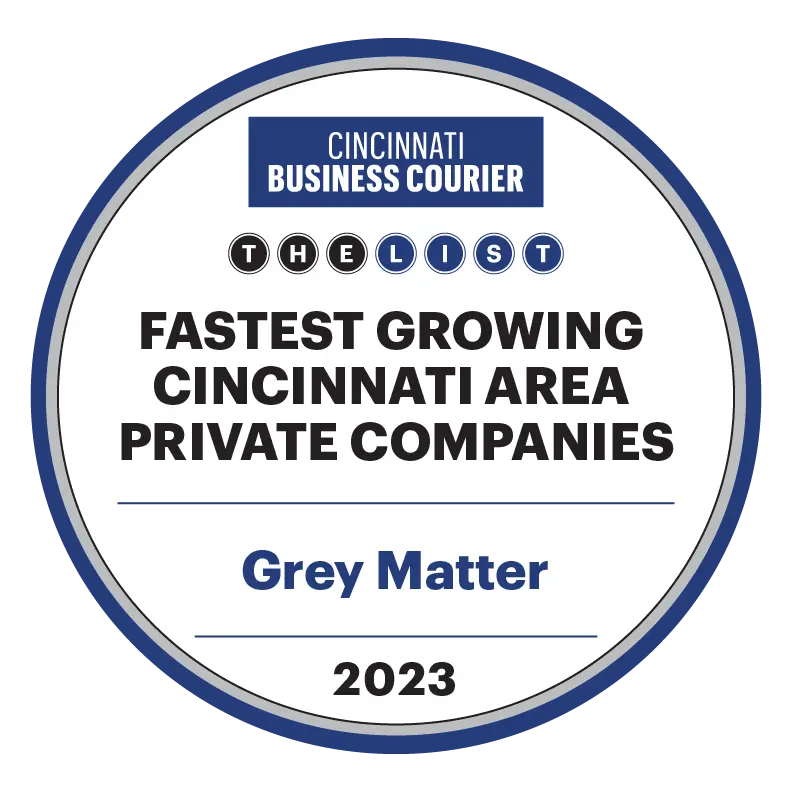These are THE 5 content topics guaranteed to drive the most traffic, leads, and revenue
Historically, sales has been viewed as a “need to have” activity, whereas marketing has been considered a “nice to have” activity.
We don’t blame companies for not seeing the value in marketing, if it’s not connected to driving more sales for the business. We maintain that the issue is not marketing itself, but rather how it’s approached.
You’re bombarded with content from other people ALL the time, via email, advertisements, blog posts… the list goes on.
But there’s one key thing most miss when it comes to content: it wasn’t designed to help the sales process!
Content helps sales – period. But content for content’s sake can have the opposite effect.
Good content is simply the information your buyers need to make the right decision. And right now, your sales team probably spends a lot of time answers the same questions and delivering the same information to lead after lead.
What if we could help that process along by creating content that they continuously need? Sounds good in theory, but the question of how to get it done is inevitably on our minds.
In this post we’re going to discuss:
- What content is helpful to your sales process
- When to use the content throughout your sales process
- How to get this content created for yourself
1. What type of content helps the sales process?
Content for content’s sake is bad – in fact it can actually hurt more than it helps. The biggest issue we see with the content that companies share, is that it’s focused on them, instead of their buyer.
Write THIS, Not THAT
These are the top 5 content topics guaranteed to drive the most traffic, leads, and revenue vs. common topics that companies insist on creating, which do nothing for their sales process
- WRITE THIS: What influences costs up and down?
Costs are what everyone needs to know, so don’t avoid it. You don’t have to explicitly state your prices. Just discuss how your buyer can keep their costs down, and what aspects of your offering might cause that price to creep up. - NOT THAT: The infamous “About Us” video:
Instead of focusing on yourself, focus on what your buyer really wants to know. Companies seem to love these, despite the fact that any of their competitors could probably say the exact same thing about themselves.
- WRITE THIS: What problems can occur with your product or service?
Your buyers only want what’s best for them – so give it to them. Objectively speaking, why would someone choose your offering over that of a competitor? We’re not suggesting a laundry list of potential issues. What is helpful is to be transparent about certain applications and scenarios where expectations may not be met. - NOT THAT: Product descriptions that don’t explain why a buyer should choose this product or service. Many companies get lost in the technical descriptions of their product, instead of focusing on what applications and problems your product or service is best suited for. (By connecting your offering to the buyer’s problem, you start to convince them that you’re the best fit for them.)
- WRITE THIS: How does your offering compare to the alternatives?
Certain products are a fit for certain buyers. By demonstrating who is a fit for your product or service, vs who is not, you demonstrate a humility that’s rarely exhibited throughout the sales process. This disarms the buyer and starts to establish some trust with you. - NOT THAT: Generic, high-level statements:
If we swapped your competitor’s logo onto your website, would your buyer even notice the difference? What about your company is unique and different? The more specific you can be, the more expertise you’ll be able to establish.
- WRITE THIS: Frequently-asked-questions
One of the most overlooked ways to attract and retain buyer attention is to simply answer their questions! Companies spend most of their time talking about themselves instead of focusing on what the buyers want to know. This simple shift can have a profound impact on your sales process. - NOT THAT: How often have you received the “just following up” email from a sales rep? (don’t worry, we’re guilty of it, too!) This isn’t personalized, and it isn’t educational. Every interaction with your buyer is an opportunity gained or lost, to build more trust and educate them. Don’t waste such an important exchange by communicating nothing. Ask yourself, whenever you’re communicating with a buyer: What am I teaching them?
- WRITE THIS: Reviews
As your buyer gets closer to making a decision, they’re going to want to assess how well you’ve done with other clients. Beyond just sharing a logo, answer these two questions:- How would your client describe the value you brought to them? If possible, get them on video saying these words!
- What problem did you solve for this client, and how? (this should relate to the specific buyer you’re communicating with; don’t just pick a review or case study at random)
- NOT THAT: Companies are used to sharing some of their best clients with their buyers, but they don’t often elaborate on what problem they solved for that client, nor do they feature a strong, detailed testimonial / review from the client themselves. It’s easy to say you’re “best-in-class” but how can you demonstrate it without saying it outright? And do so in a way that’s personalized to that specific buyer.
Why are these topics so important?
This is what buyers actually want to know. They’re not that interested to know what you think makes you so great. These are the most common questions that buyers have. These topics are the elephant in the room, which, if addressed, really builds trust between you and your buyer.
Many companies shy away from such topics, thinking it’ll jeopardize their chances of closing a new customer. But in fact, it serves to establish a lot of trust between you and your buyer because you’re being so transparent and honest with them. AND you’re actually giving them what they want, not what you want to share.
Such content can disarm their hesitations and delight them as they research their options. As your competitors drone on and on about the topics in the right-hand column, they’ll be delighted to see that you’re actually not afraid to talk about what matters to them.
Need a simple way to adjust your content to benefit your sales process?
Look for every mention of the word “we” and replace it with “you” instead, to re-focus your content around what the buyer cares about most.
And remember, good content is…
- Educational: don’t bother with something that doesn’t teach the buyer something
- Specific: your content won’t resonate if it’s too high-level and generic
- Personalized: 1 to 1 communication is huge; again, generic messages don’t resonate
2. When do you use this content?
When we mention content, most just think this becomes content that lives on your blog. The best performing sales teams constantly use key topics throughout the sales cycle, though.
The benefit of orienting your content to your buyer’s priorities is that you can use the content in multiple areas of your sales cycle, such as on the website, but also in emails, presentations, and correspondence with your buyers.
Below is a visual guide that represents common milestones throughout the sales cycle, and the corresponding content topics and activities that can help teams move more buyers to the next step of their process.
3. How do you create this content?
There are three steps to get this process rolling for your team.
- Map out your customer journey:
- It’s hard to determine what content to use where if you don’t first understand the key milestones of your sales process. Feel free to copy the model above.
- Start to assemble the most important aspects of your sales process by mapping out the path your buyers take from, “searching for answers to their problems” to “they are now your customer.”
- Take note of the questions buyers ask along their journey. Why did your customers say yes to you? Why did some buyers say no?
- Once you have mapped out the customer journey, identify where the gaps in this process are:
- When you have an idea of the various stages of your sales process, you’ll be able to more clearly see that some of your activities might be a little weak in certain areas.
- Then you’ll know what parts of the process can be standardized, and what content could help your sales reps close more business.
- Define the roles & responsibilities of your team members:
- Sales reps can’t manage this entire sales process on their own. They need marketing’s help to create content that helps them close new business.
- It’s marketing’s job to understand, from sales reps, what questions buyers ask most often so that they can create content that helps sales reps get more meetings.
- It is both sales and marketing’s responsibility to align themselves to ensure they’re both pushing on the same side of the rock. If they don’t work together, you’re inevitably wasting time and money.
Remember, content for content’s sake can actually hurt you more than help you. Do yourself a favor and create the content that sales would love to use and measure it against its ability to convince more buyers to take meetings with your sales reps.









